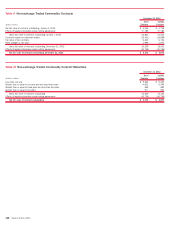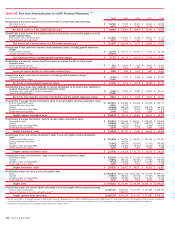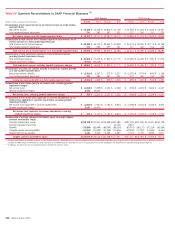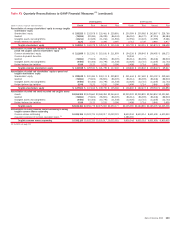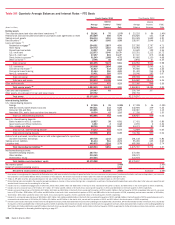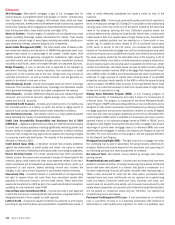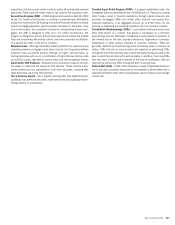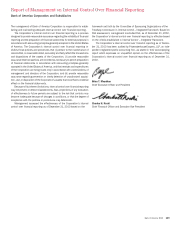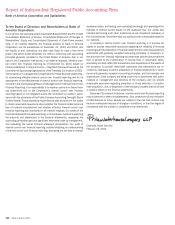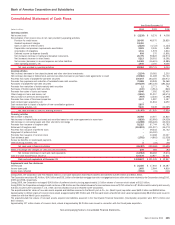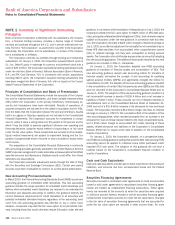Bank of America 2010 Annual Report Download - page 139
Download and view the complete annual report
Please find page 139 of the 2010 Bank of America annual report below. You can navigate through the pages in the report by either clicking on the pages listed below, or by using the keyword search tool below to find specific information within the annual report.acquisition, that the investor will be unable to collect all contractually required
payments. These loans are written down to fair value at the acquisition date.
Second Lien Program (2MP) – A MHA program announced on April 28, 2009
by the U.S. Treasury that focuses on creating a comprehensive affordability
solution for homeowners. By focusing on shared efforts with lenders to reduce
second mortgage payments, pay-for-success incentives for servicers, inves-
tors and borrowers, and a payment schedule for extinguishing second mort-
gages, the 2MP is designed to help up to 1.5 million homeowners. The
program is designed to ensure that first and second lien holders are treated
fairly and consistently with priority of liens, and offers automatic modification
of a second lien when a first lien is modified.
Subprime Loans – Although a standard industry definition for subprime loans
(including subprime mortgage loans) does not exist, the Corporation defines
subprime loans as specific product offerings for higher risk borrowers, in-
cluding individuals with one or a combination of high credit risk factors, such
as low FICO scores, high debt to income ratios and inferior payment history.
Super Senior CDO Exposure – Represents the most senior class of commer-
cial paper or notes that are issued by CDO vehicles. These financial instru-
ments benefit from the subordination of all other securities, including AAA-
rated securities, issued by CDO vehicles.
Tier 1 Common Capital – Tier 1 capital including CES, less preferred stock,
qualifying trust preferred securities, hybrid securities and qualifying noncon-
trolling interest in subsidiaries.
Troubled Asset Relief Program (TARP) – A program established under the
Emergency Economic Stabilization Act of 2008 by the U.S. Treasury to, among
other things, invest in financial institutions through capital infusions and
purchase mortgages, MBS and certain other financial instruments from
financial institutions, in an aggregate amount up to $700 billion, for the
purpose of stabilizing and providing liquidity to the U.S. financial markets.
Troubled Debt Restructurings (TDRs) – Loans whose contractual terms have
been restructured in a manner that grants a concession to a borrower
experiencing financial difficulties. Concessions could include a reduction in
the interest rate on the loan, payment extensions, forgiveness of principal,
forbearance or other actions intended to maximize collection. TDRs are
generally reported as nonperforming loans and leases while on nonaccrual
status. TDRs that are on accrual status are reported as performing TDRs
through the end of the calendar year in which the restructuring occurred or the
year in which they are returned to accrual status. In addition, if accruing TDRs
bear less than a market rate of interest at the time of modification, they are
reported as performing TDRs throughout their remaining lives.
Value-at-Risk (VaR) – A VaR model estimates a range of hypothetical scenar-
ios to calculate a potential loss which is not expected to be exceeded with a
specified confidence level. VaR is a key statistic used to measure and manage
market risk.
Bank of America 2010 137



